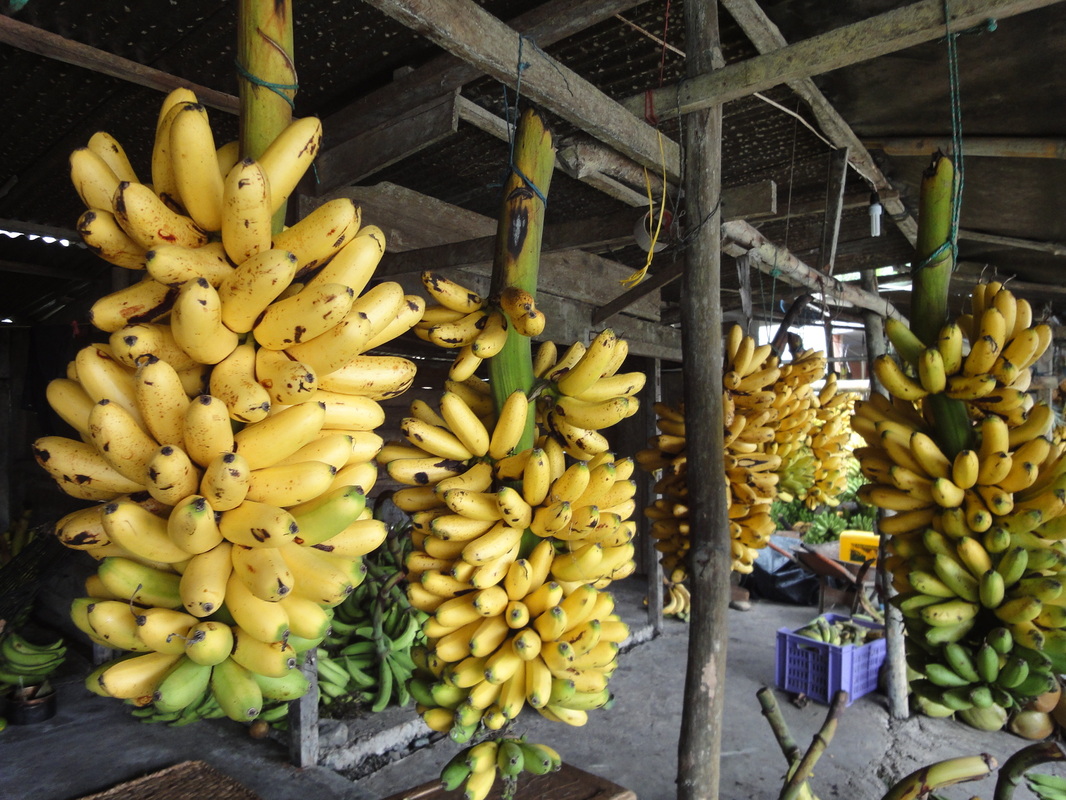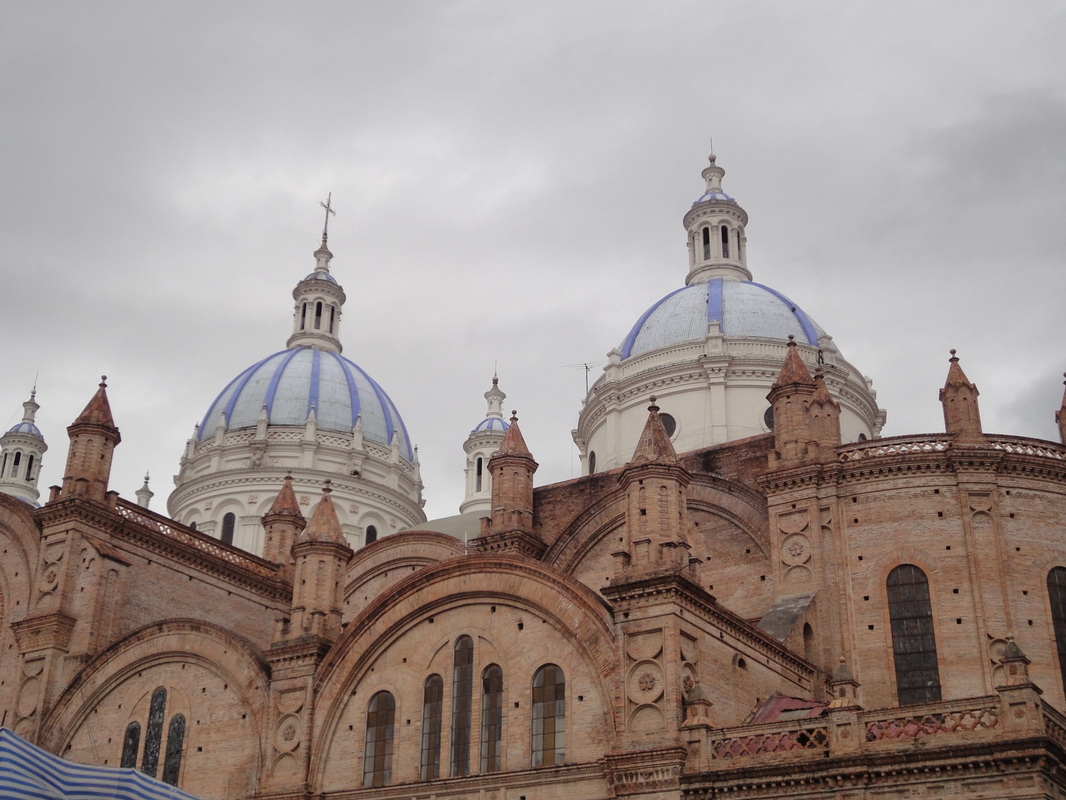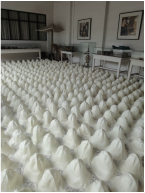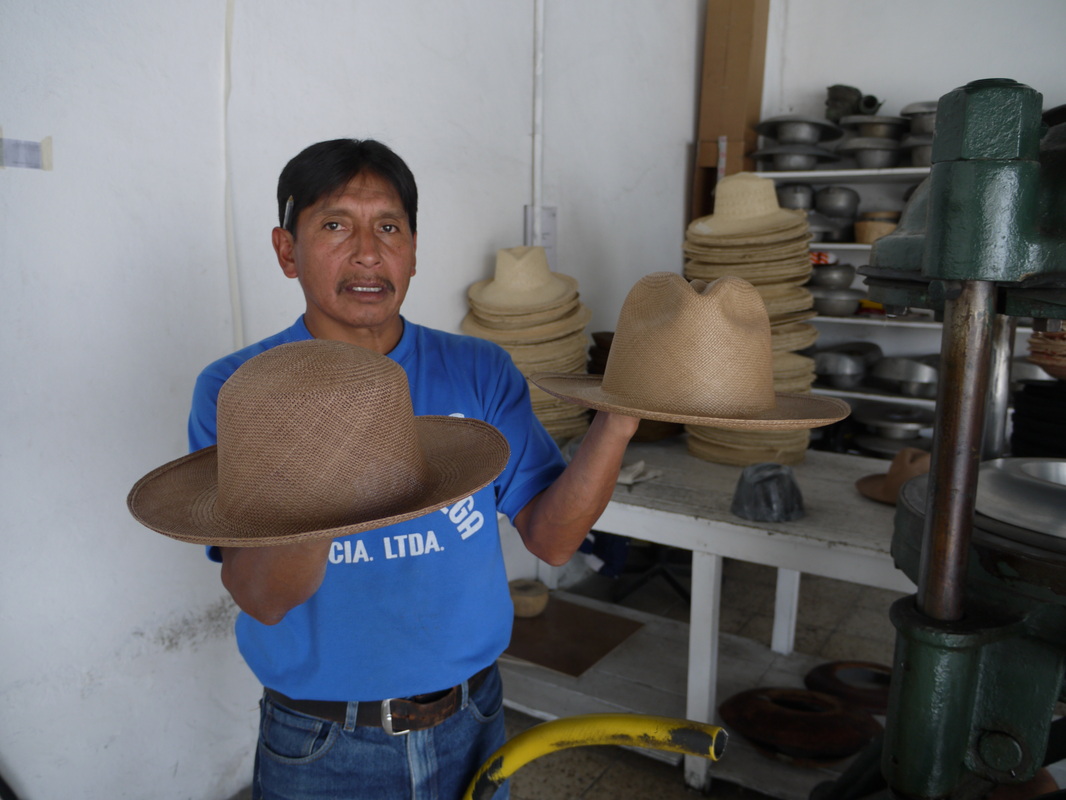Hopping on the bus from Montanita we had a couple of minutes of panic as I couldn't find the bus tickets we had bought the night before. I had been on breakfast errand duty that morning and the ticket must have fallen out of my pocket along the way somewhere. Fortunately the guy at the bus company had a passenger list so we were able to get duplicate tickets issued with just minutes to spare and we settled in for the journey to Guayquil where we had to transfer to another bus onto Cuenca. The buses from Guayquil supposedly run via two different routes - one taking 5 hours and the other one only 3. We thought that we were on the 3 hour route but it took us about 4 hours in the end.
The journey was pretty spectacular, up through the mountains, and into the clouds which disguised the steep valleys dropping away from the side of the road.
During the rest of this trip we have been looking at places we want to stay online and just rocking up without a reservation and it hasnt been a problem, however when we arrived in Cuenca it turned out that there was a music festival on that weekend so lots of places were booked out, including our choice. We headed a couple of streets away and found another hostel - not exactly a charmer in terms of atmosphere but all we really needed was a place to sleep anyway. We were both starving so headed out to try and find some dinner and stumbled across an Indian restuarant. It was pretty chilly outside and would make a nice change from the typical south american food we've been eating so we headed in. The food ended up being Pakastani (as did the owner) but it was delicious! They even had a pakastani bread that I could eat which was a nice surprise.
The journey was pretty spectacular, up through the mountains, and into the clouds which disguised the steep valleys dropping away from the side of the road.
During the rest of this trip we have been looking at places we want to stay online and just rocking up without a reservation and it hasnt been a problem, however when we arrived in Cuenca it turned out that there was a music festival on that weekend so lots of places were booked out, including our choice. We headed a couple of streets away and found another hostel - not exactly a charmer in terms of atmosphere but all we really needed was a place to sleep anyway. We were both starving so headed out to try and find some dinner and stumbled across an Indian restuarant. It was pretty chilly outside and would make a nice change from the typical south american food we've been eating so we headed in. The food ended up being Pakastani (as did the owner) but it was delicious! They even had a pakastani bread that I could eat which was a nice surprise.
Despite the misnomer Cuenca is actually the main production area of the Panama Hat. They began being produced in Ecuador during the 17th century and the confusion with the name came from the fact that hats were shipped via the Isthmus of Panama before onto their destinations in Asia, the Americas and Europe, acquiring the name that reflected their point of international sale rather than their place of origin. When Theodore Roosevelt visited the Panama Canal construction site in 1904 and was photographed wearing one their popularity increased
The two main processes in the creation of a Panama hat are weaving and blocking and every authentic panama hat is handmade. They are commercially graded to indicate quality and the rarest and most expensive hats can have as many as 1600–2500 weaves per square inch and cost upto several hundred, or even thousand, dollars.
Ty was really keen to get a hat and so one of the places we visited was the factory of Homero Ortega, a family run business which has been a key player in the panama hat industry over the last century. They have a great sort of museum set up and you are able to walk around the factory talking to the workers and seeing the dying and shaping processes taking place. After trying on numerous various shades of cream to find just the right colour Ty had his head measured and a tailored hat made specifically for him.
We wandered around the old town afterwards through the flower market (where Ty bought me a rose) and soaked up the atmosphere of the Cuenca's town square and its architecture before spending a couple of really nice relaxing hours at a cafe/restuarant called Cafe Eucalyptus. It must have been owned by an Aussie at some point but the current owner is American. They have a couple of really comfy couches next to a big fireplace and since the weather was a bit average and there wasnt really a lot else to see it was the perfect place to chill out with some yummy food, red wine and continue our international 'shithead' championship. Unfortunately for Ty I was on form and took out the Ecuadorian chapter haha. It was pretty cool at the end of the night as they had marshmallows for toasting on the open fire. I think I discovered my new favourite Spanish word too - marshmallows are 'bessositos de nobia' (little girlfriend kisses) which is so sweet.
Next stop: Mancora (Peru)
The two main processes in the creation of a Panama hat are weaving and blocking and every authentic panama hat is handmade. They are commercially graded to indicate quality and the rarest and most expensive hats can have as many as 1600–2500 weaves per square inch and cost upto several hundred, or even thousand, dollars.
Ty was really keen to get a hat and so one of the places we visited was the factory of Homero Ortega, a family run business which has been a key player in the panama hat industry over the last century. They have a great sort of museum set up and you are able to walk around the factory talking to the workers and seeing the dying and shaping processes taking place. After trying on numerous various shades of cream to find just the right colour Ty had his head measured and a tailored hat made specifically for him.
We wandered around the old town afterwards through the flower market (where Ty bought me a rose) and soaked up the atmosphere of the Cuenca's town square and its architecture before spending a couple of really nice relaxing hours at a cafe/restuarant called Cafe Eucalyptus. It must have been owned by an Aussie at some point but the current owner is American. They have a couple of really comfy couches next to a big fireplace and since the weather was a bit average and there wasnt really a lot else to see it was the perfect place to chill out with some yummy food, red wine and continue our international 'shithead' championship. Unfortunately for Ty I was on form and took out the Ecuadorian chapter haha. It was pretty cool at the end of the night as they had marshmallows for toasting on the open fire. I think I discovered my new favourite Spanish word too - marshmallows are 'bessositos de nobia' (little girlfriend kisses) which is so sweet.
Next stop: Mancora (Peru)






 RSS Feed
RSS Feed